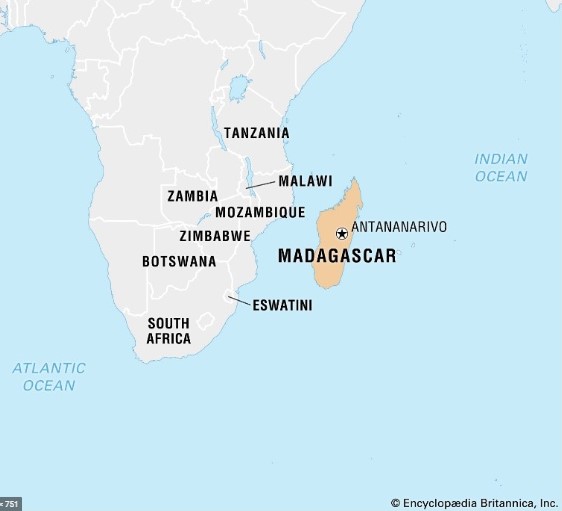Focus: Prelims, GS-III Environment and Ecology
Why in news?
A newly described species from Madagascar suggests that dinosaurs and pterosaurs (extinct flying reptiles) had extremely small ancestors – named Kongonaphon kely.
Kongonaphon kely
- Kongonaphon kely is just 10 centimeters tall and the name roughly translates from the Malagasy language as ‘tiny bug slayer’ — a reference to its insect diet.
- The fossils were discovered in 1998 as part of an expedition by an American–Malagasy crew.
- Kongonaphon was alive around 240 million years ago, and during that time Madagascar was directly attached to India as part of the supercontinent Gondwana.
- Triassic vertebrate fossils of similar age have been found in a band of rocks extending across Madhya Pradesh, Chhattisgarh and Odisha.
- Nothing like Kongonaphon’s fossil has been found in these regions of India yet.
- Such tiny ancestral body size may help explain the origins of flight in pterosaurs.
Madagascar and the Malagasy people

- Madagascar (previously known as the Malagasy Republic) is an island country in the Indian Ocean, off the coast of East Africa.
- The Malagasy are an Austronesian ethnic group native to the island country of Madagascar.
- Madagascar is the world’s second-largest island country.
- The Austronesian peoples, or more accurately Austronesian-speaking peoples, are a large group of various peoples in Taiwan, Island Southeast Asia, Micronesia, coastal New Guinea, Island Melanesia, Polynesia, and Madagascar, that speak the Austronesian languages.
-Source: The Hindu




